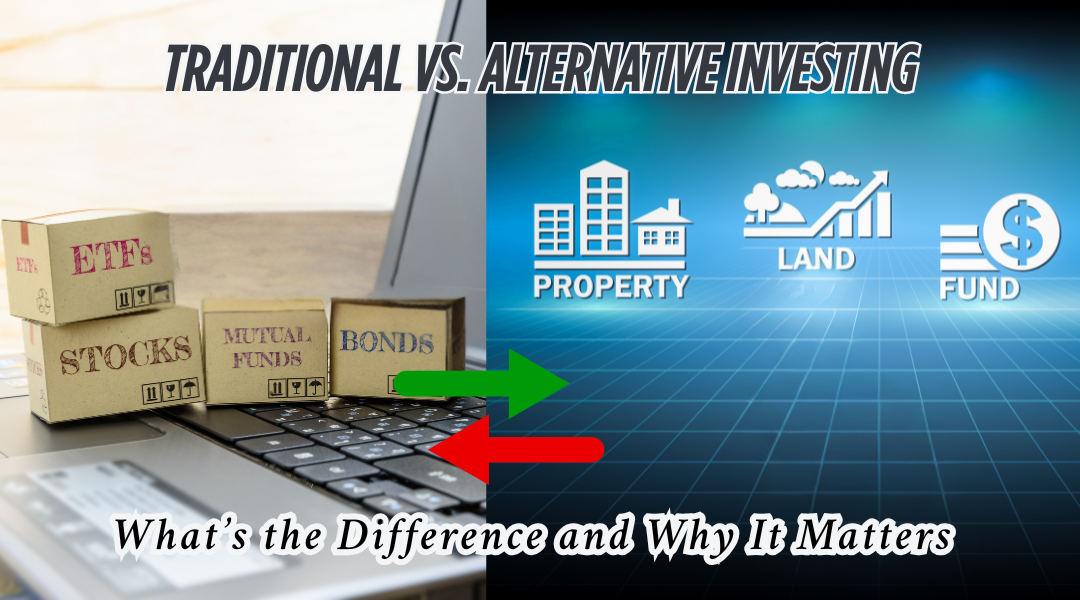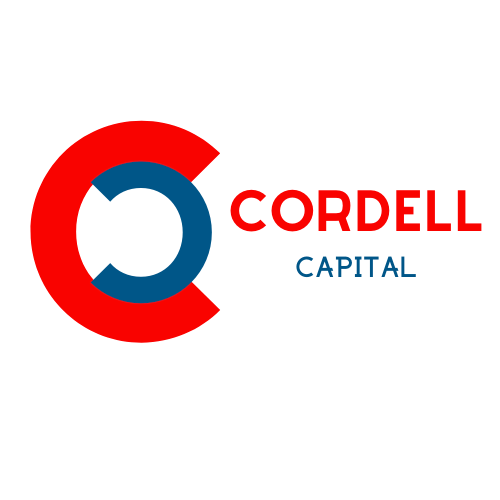Traditional vs. Alternative Investing: What’s the Difference and Why It Matters

When most people think of investing, they think of the stock market. Stocks, bonds, and mutual funds have long been the go-to vehicles for growing wealth. But over the last decade, a growing number of investors—especially high-income professionals and entrepreneurs—are exploring alternatives that go beyond Wall Street. This shift is driven by the desire for greater control, better returns, reduced volatility, and more passive income.
Let’s break down the key differences between traditional investments and alternative investments like multifamily and commercial real estate, short-term rental funds, and debt validation funds—and why now might be the time to consider both.
1. Accessibility and Familiarity
Traditional Investments:
- Most investors are introduced to stocks and bonds early in their financial journey.
- They’re accessible through employer-sponsored retirement plans, online brokerages, and financial advisors.
- Daily fluctuations and financial news make them easy to track—but also a source of anxiety for some.
Alternative Investments:
- Historically reserved for institutions or accredited investors, alternative investments are now more accessible than ever.
- These include real estate syndications, private equity, debt funds, and more.
- While they may require a learning curve, platforms and educational tools are helping bridge the gap for everyday investors.
2. Volatility and Market Correlation
Traditional Investments:
- Stocks are highly correlated to overall market performance.
- Economic news, political developments, interest rate shifts, and global events can dramatically affect their value.
- Bonds offer more stability but often with lower returns, especially in inflationary periods.
Alternative Investments:
- Generally, less correlated with public markets.
- Multifamily real estate and commercial buildings often hold value or even perform better during downturns due to steady rental income.
- Debt validation funds are asset-backed and structured to generate returns regardless of stock market performance.
3. Income and Cash Flow
Traditional Investments:
- Stocks may pay dividends, but many investors rely on long-term appreciation for growth.
- Bonds provide fixed interest payments, though yields may be modest.
Alternative Investments:
- Designed to generate consistent passive income.
- Multifamily properties offer monthly or quarterly distributions based on rent collected.
- Short-term rental funds capitalize on the booming travel economy, generating high cash flow from nightly stays.
- Debt validation funds offer fixed quarterly payouts, often at rates far higher than traditional fixed-income products.
4. Control and Tangibility
Traditional Investments:
- Investors typically have little to no influence on a company's operations.
- Stocks and bonds are intangible—you can't "see" or "touch" your investment.
Alternative Investments:
- Real estate, for example, is a tangible asset you can visit, improve, and understand on a local level.
- Investors in private placements often have transparency into operations, asset management, and financial performance.
- With debt validation funds, investors participate in a process with real-world impact—helping borrowers eliminate debt while earning a return.
5. Purpose and Impact
Traditional Investments:
- Often purely focused on financial gain.
- Limited opportunity for direct social or community impact.
Alternative Investments:
- Can align with personal values and mission.
- Debt validation funds, for instance, help veterans, first responders, and working families resolve credit card debt, generating both income and impact.
- Investing in workforce housing or local commercial properties can strengthen communities while creating stable returns.
Final Thoughts
Diversification isn’t just a buzzword—it’s a core principle of successful investing. While traditional assets have a place in a well-rounded portfolio, alternative investments can provide balance, income, and impact in ways Wall Street can’t.
Whether you’re looking to reduce market exposure, boost passive income, or align your capital with a cause, exploring multifamily real estate, commercial properties, short-term rental funds, or debt validation funds could be the next step in your investing journey.
Interested in learning more? Email us at info@cordellcapital.com to explore how these alternatives work and see if they’re the right fit for your portfolio.






